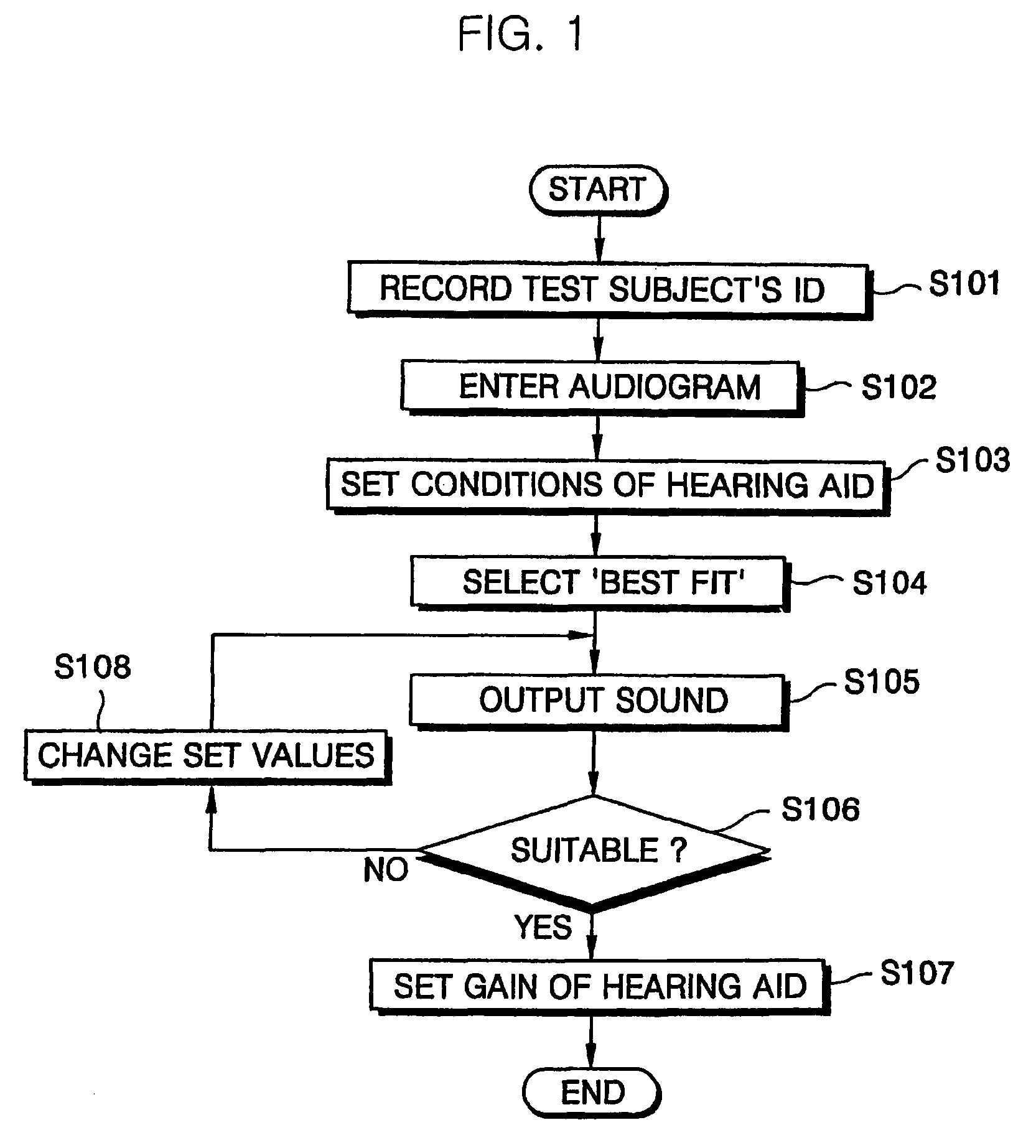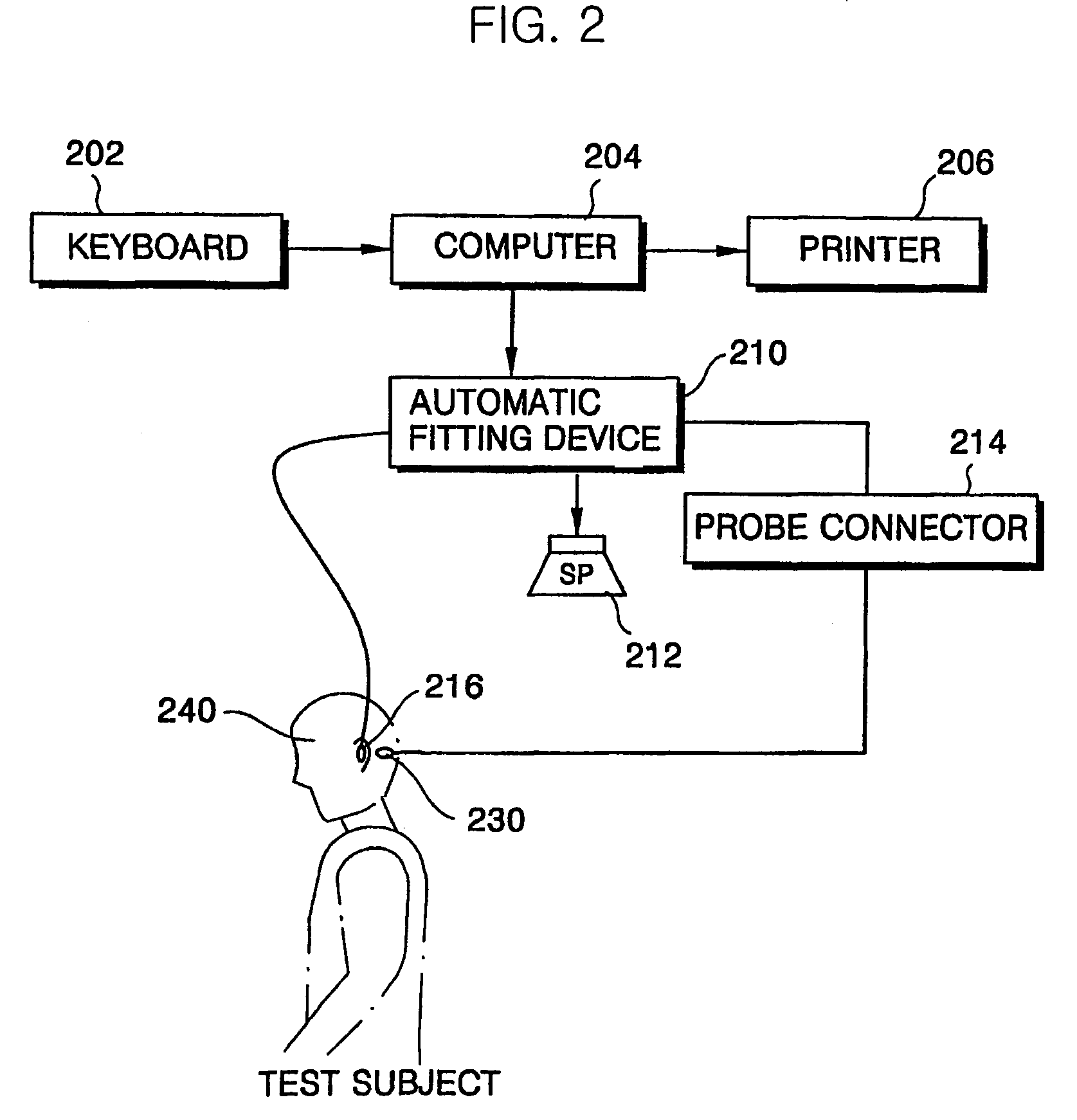Method of automatically fitting hearing aid
a hearing aid and automatic fitting technology, applied in the field of automatic fitting hearing aids, can solve the problems of sweeping procedure not only requiring a longer fitting time, but might be meaningless in most patients, and the inability to achieve accurate individual fittings
- Summary
- Abstract
- Description
- Claims
- Application Information
AI Technical Summary
Benefits of technology
Problems solved by technology
Method used
Image
Examples
Embodiment Construction
[0012]A preferred embodiment of the present invention will now be described with reference to the accompanying drawings.
[0013]FIG. 2 is a schematic diagram of an automatic hearing aid fitting system according to the present invention. The automatic hearing aid fitting system includes a key board 202, a computer 204, a printer 206, an automatic fitting device 210, a speaker 212, a probe connector 214 connected to a hearing aid 230 and to the automatic fitting device 210, a probe tube microphone 216 connected to the automatic fitting device 210, and the hearing aid 230 connected to the probe connector 214. The computer 204 has an operating system (O / S) and fitting-related program loaded therein. In response to an operator's manipulation of the key board 202, the computer 204 controls the automatic fitting device 210 and manages various kinds of data. Also, the computer 204 monitors the operation state to exhibit the monitored data to the operator and allows the results to be printed b...
PUM
 Login to View More
Login to View More Abstract
Description
Claims
Application Information
 Login to View More
Login to View More - R&D
- Intellectual Property
- Life Sciences
- Materials
- Tech Scout
- Unparalleled Data Quality
- Higher Quality Content
- 60% Fewer Hallucinations
Browse by: Latest US Patents, China's latest patents, Technical Efficacy Thesaurus, Application Domain, Technology Topic, Popular Technical Reports.
© 2025 PatSnap. All rights reserved.Legal|Privacy policy|Modern Slavery Act Transparency Statement|Sitemap|About US| Contact US: help@patsnap.com



